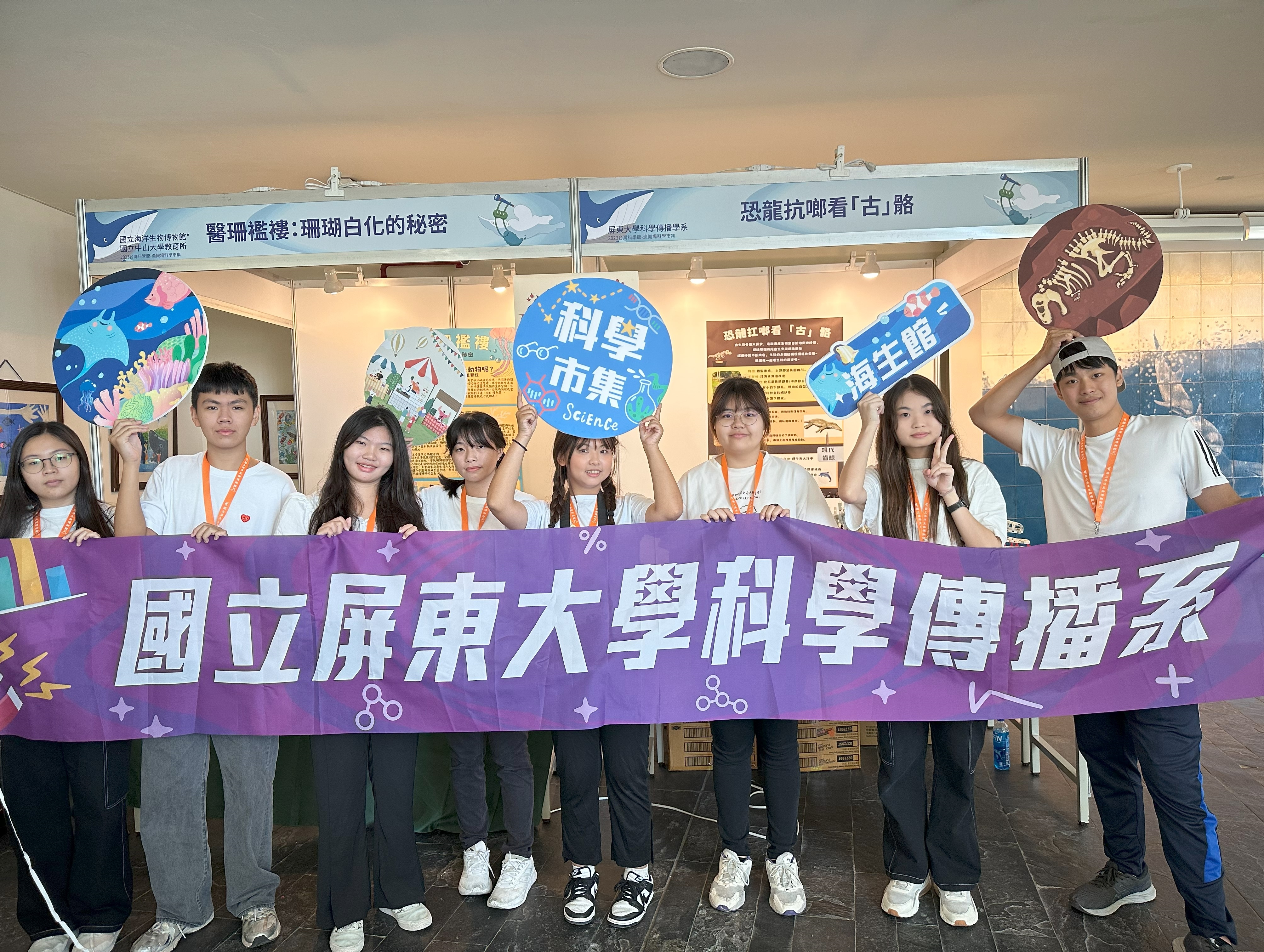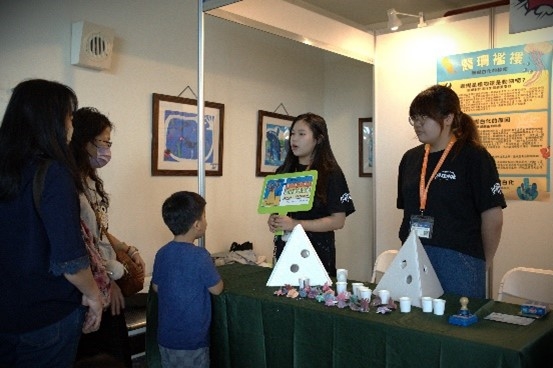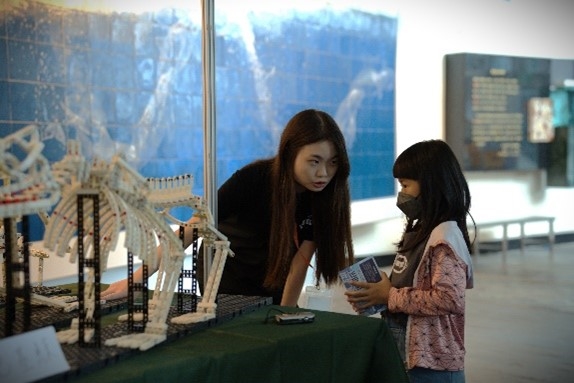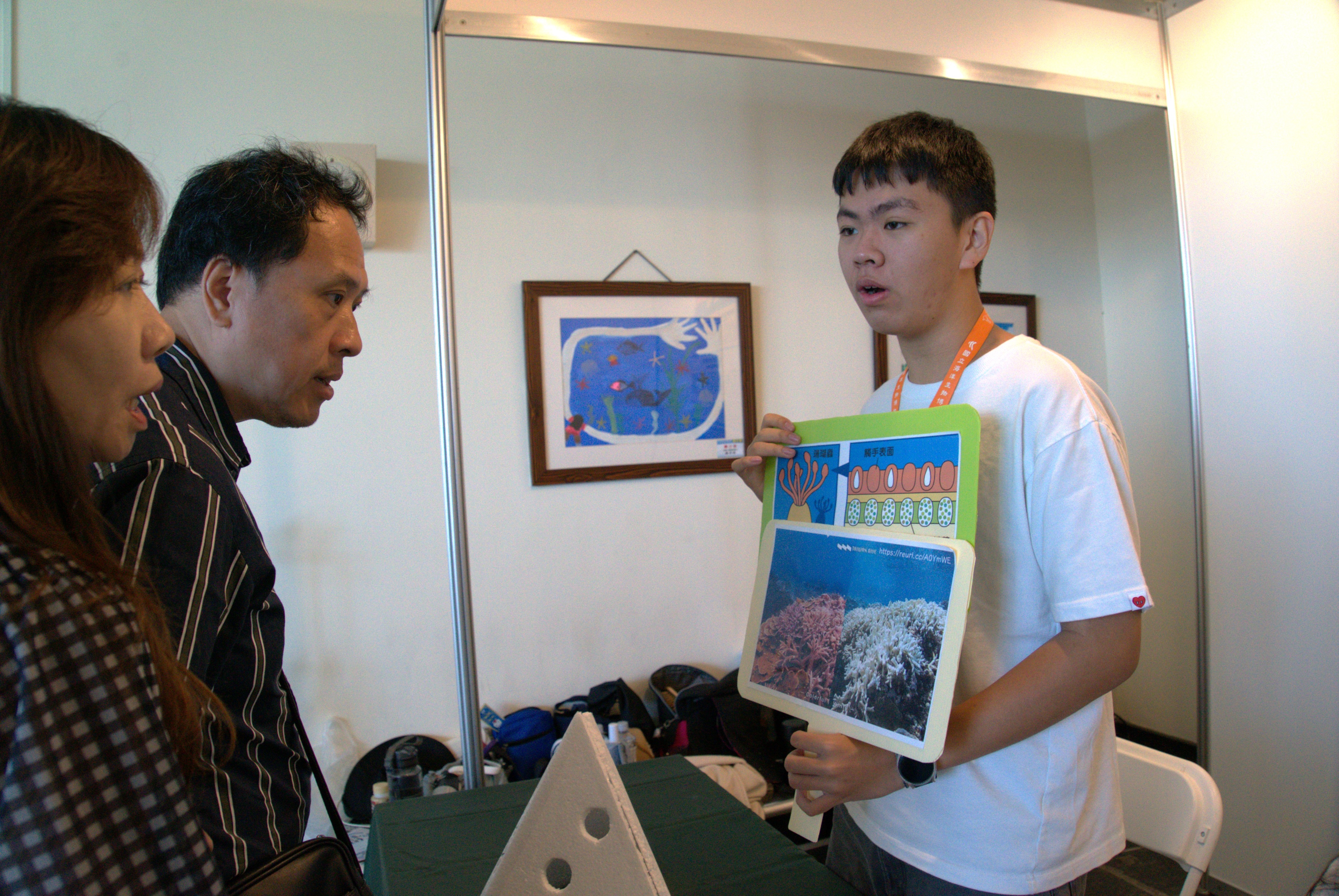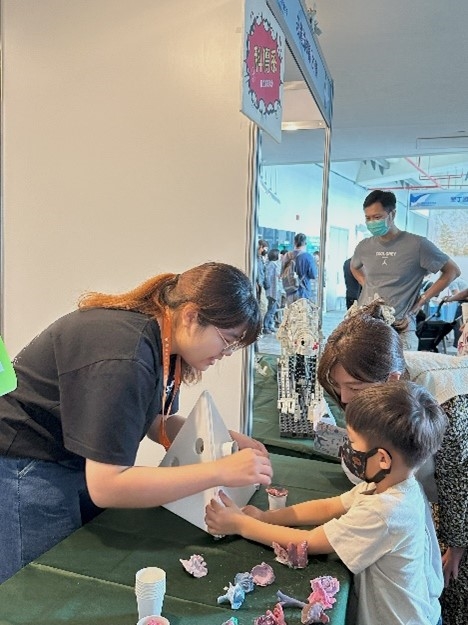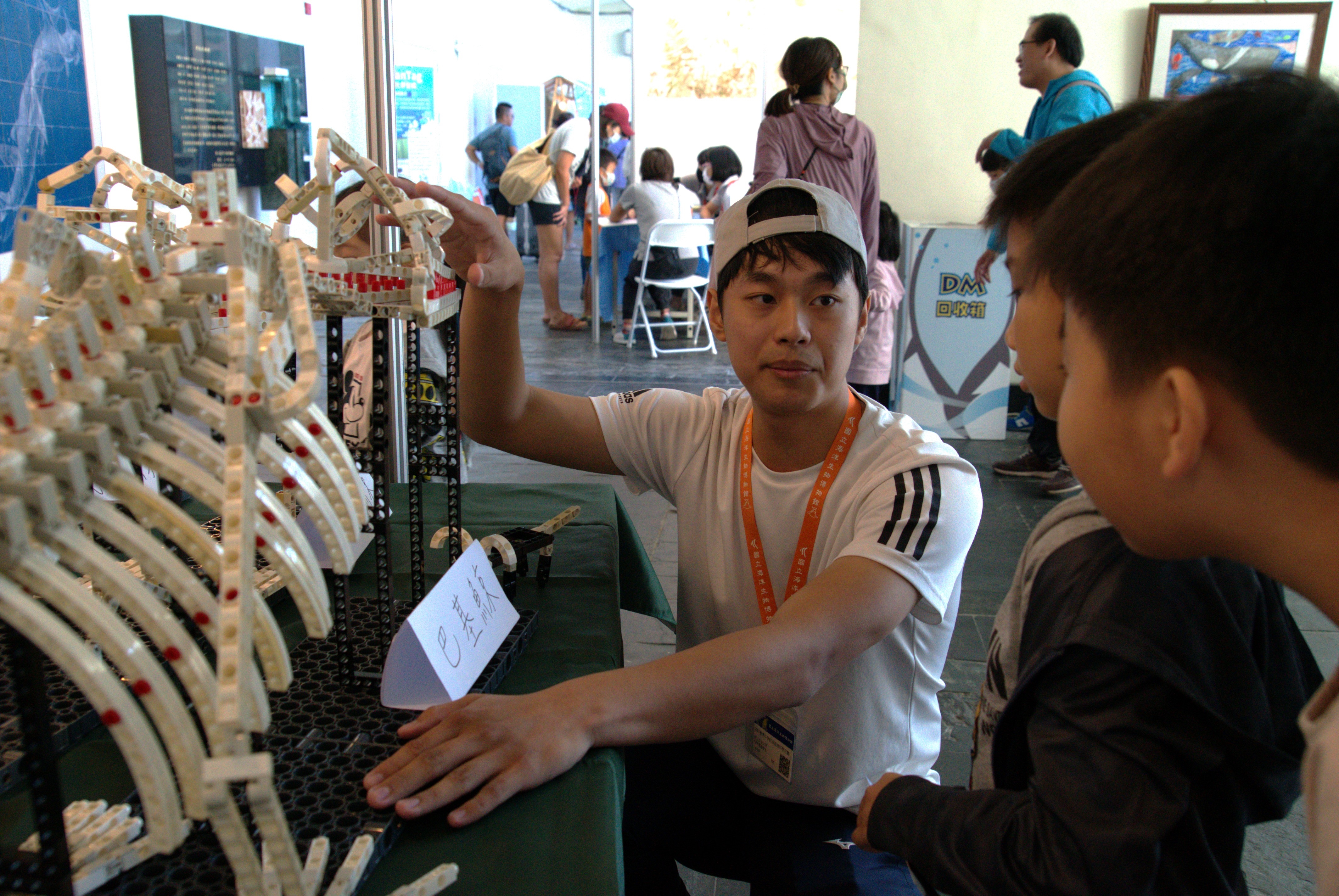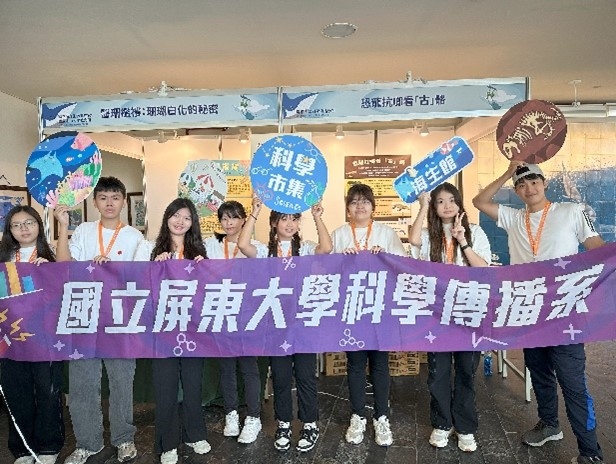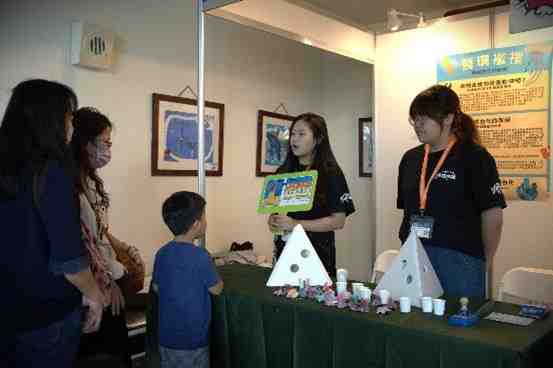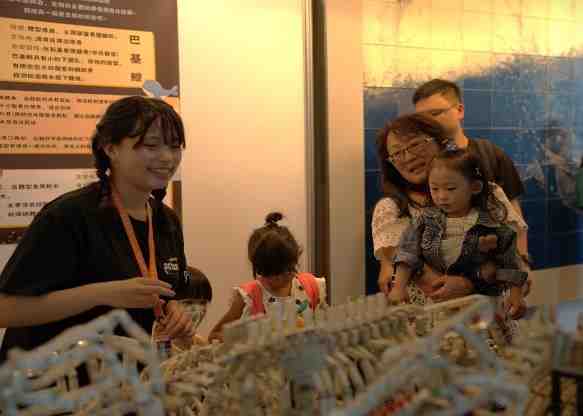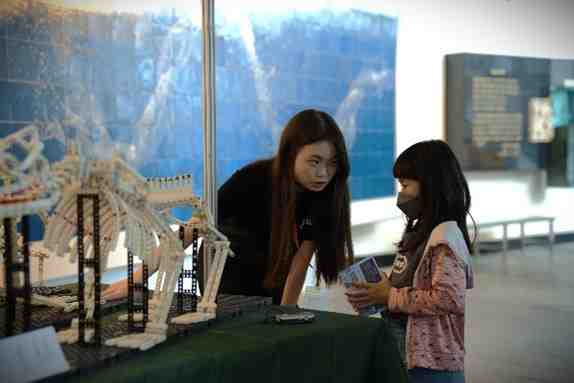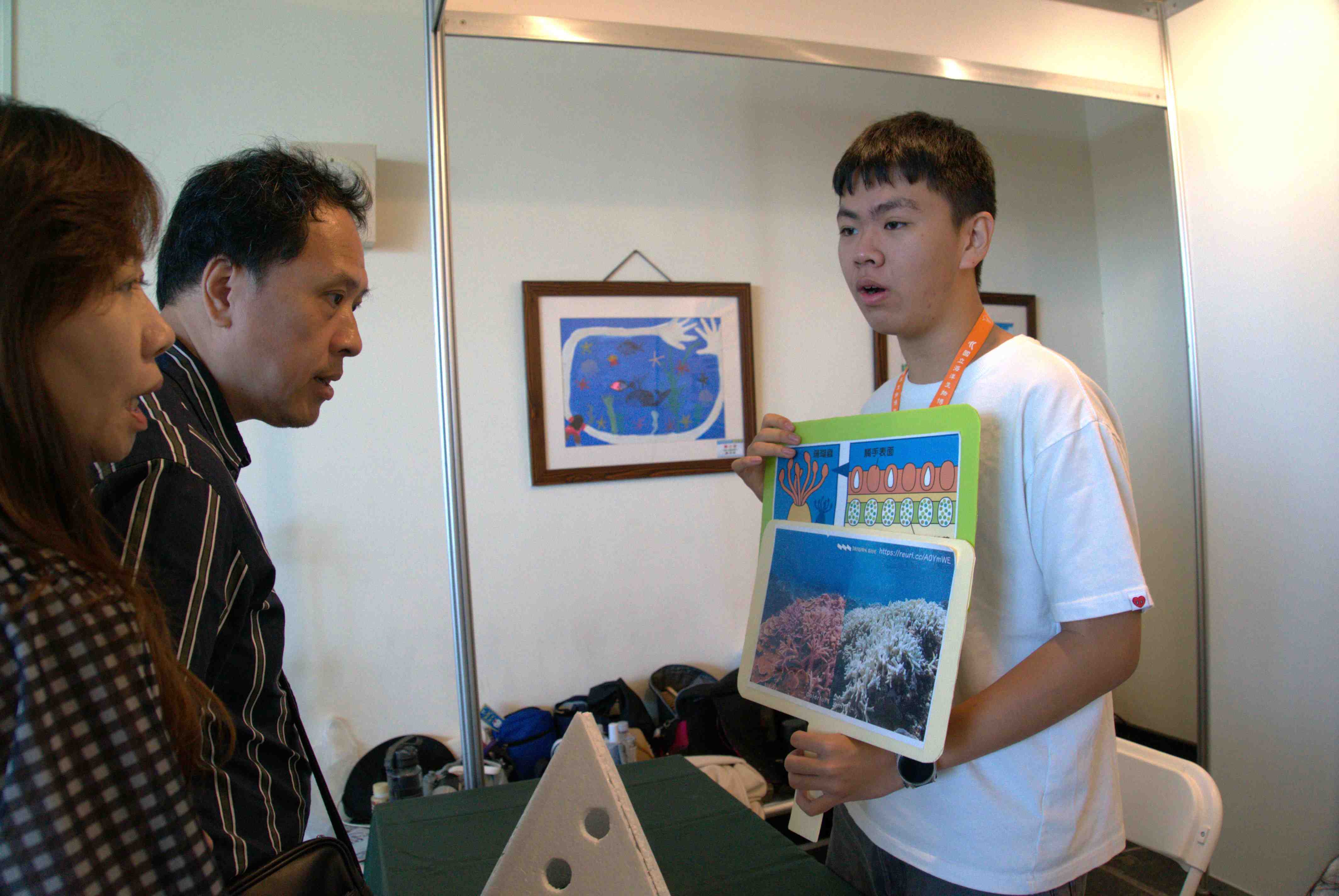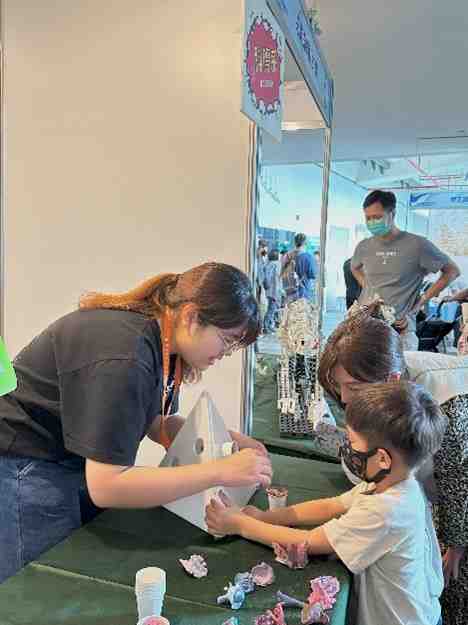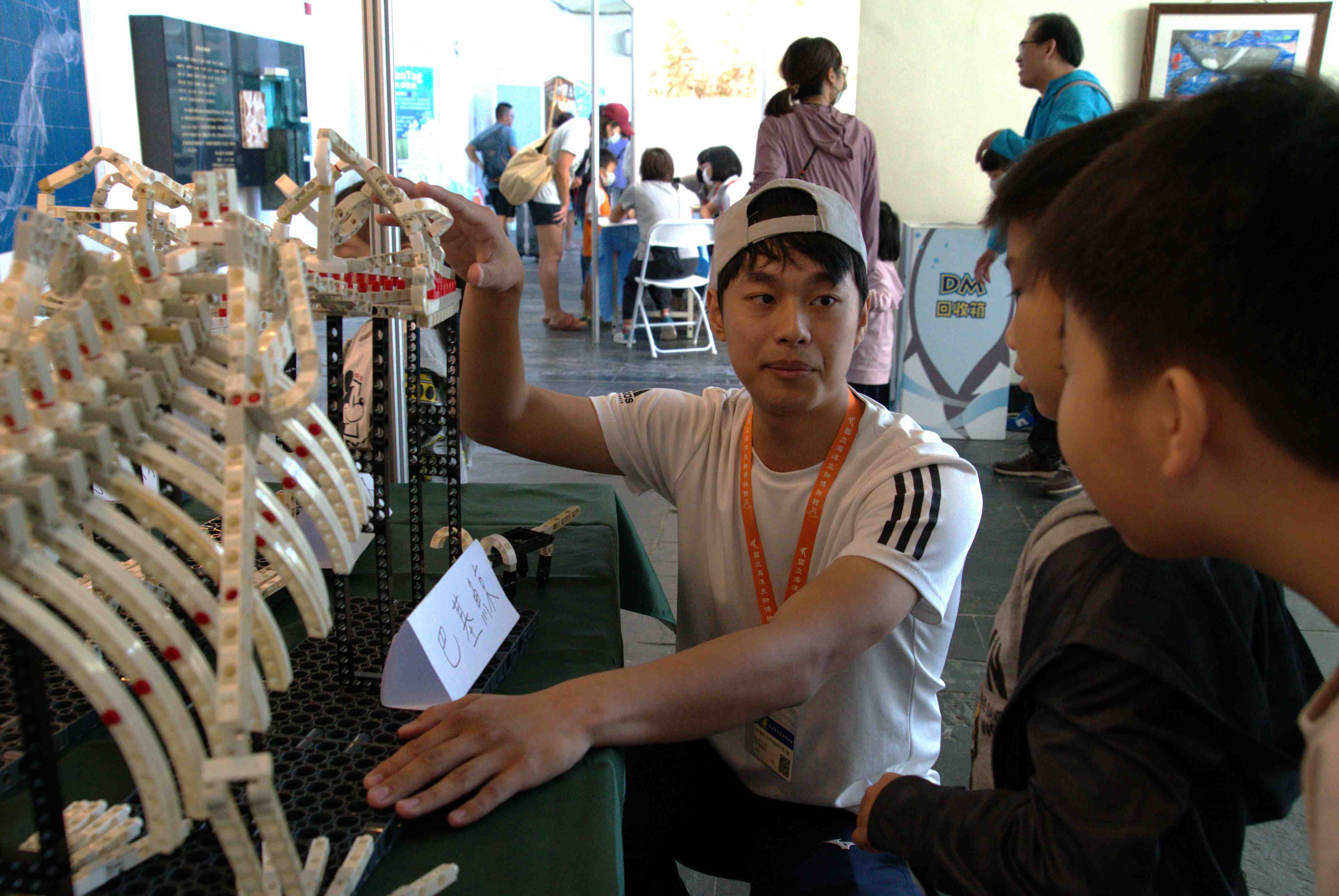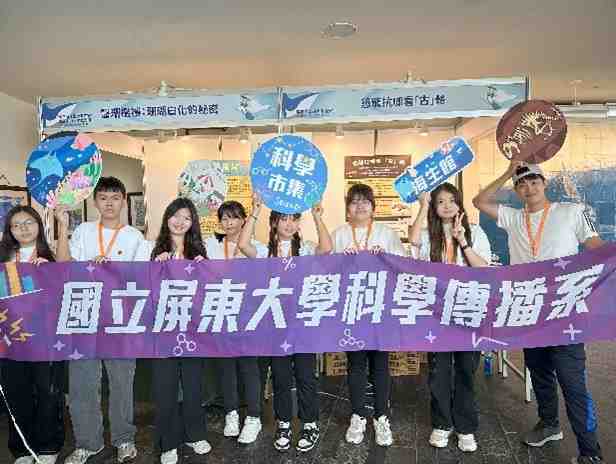Haishengguan Fish Knowledge Market #Yishan Ragged #Dinosaur Anti-Chang Look at Ancient Bones
【2023 Taiwan Science Festival Fishery Science Market】Science popularization activities start . Students from the Department of Science and Communication launched science exhibitions and performances, with coral restoration and cetacean skeleton evolution history as the main directions. Through the promotion of scientific operation experience booths, visitors can not only experience scientific practice in the booths, but also \learn by doing\ to understand the mysteries of the ocean. The Secret of Coral Bleaching: Introduce the mystery of coral color and build a simulated coral restoration pattern. (Coral restoration is completed by using a cup as a potted coral, a coral specimen made of paper clay, and then putting the coral in a small potted plant and then putting it in the back stone.) ) Dinosaurs look at the ancient bones: using Zhigao building blocks to simulate the evolution of cetacean skeletons. (Integrating building blocks into bionics for on-site scientific experience, focusing on the observation and interpretation of \bones\, and explaining the importance of marine conservation and cetacean habitat protection).
Activity Goals aligned with SDGs Projects







Goal
Science Cultivation、Public Engagement
Type of event
Experimental Demonstrations
Market/Fairs/Carnivals
Organizer
Department of Science Communication
National Pingtung University
Event Audience
Volkswagen
Contact
Deng Zongsheng
Telephone Number
0913317352
tsdeng@mail.nptu.edu.tw
Result
Students from the Department of Science and Communication participated in the "Fish Field-Science Market" of the Marine Biology Museum of the 4th Taiwan Science Festival on 11/11 and 12. With the purpose of conserving the ocean and marine resources in the 14th indicator of SDGs, the Department of Science and Communication launched two close-up science booths of "Dinosaur Resistance to the Ancient Skeleton" and "Yishan Ragged: The Secret of Coral Bleaching", integrating building blocks into bionics and coral models to do scientific experience on the spot, the former will focus on the observation and interpretation of "bones" in the booth topic, and the blue whale skeleton specimens will be exhibited in the Marine Life Museum in December after the blue whale stranding incident on Changbin Beach in 2020. It talks about the importance of marine conservation and the protection of cetacean habitats, and at the same time, it is also a child-friendly building block that simulates whale bones, attracting attention and understanding of the body structure of living beings; The latter has a small cup as a potted coral plant on the site, a coral specimen made of paper clay, and the coral is put into a small potted plant and then put into the Danggu stone to complete the coral restoration. In addition to experiencing scientific practice in the booths, visitors can learn by doing to understand the mysteries of the ocean.
Number of Participants3,000人
Video LinkFeatured events
Contact Us
- Tel: 02-7749-6818
- Email: iybssdtw@gmail.com
Adviser

自然科學及永續研究發展處
Organizer
國立臺灣師範大學科學教育研究所、自然科學及永續研究推展中心、國立成功大學材料科學及工程學系、台灣物理學會、中國化學會
Co-organizer
中央研究院永續科學中心、中原大學物理學系、中華民國數學會、行政院原子能委員會、財團法人國家實驗研究院國家高速網路與計算中心、財團法人國家衛生研究院、高雄市政府教育局、國立中央大學科學教育中心、國立中正大學科學教育中心、國立成功大學科學教育中心、國立自然科學博物館、國立東華大學科學教育中心、國立科學工藝博物館、國立海洋生物博物館、國立海洋科技博物館、國立高雄大學科學教育中心、國立高雄師範大學、國立清華大學跨領域科學教育中心、國立彰化師範大學、國立臺灣大學科學教育發展中心、國立臺灣科學教育館、國家衛生研究院、淡江大學科學教育中心、逢甲大學綠能科技暨生技產業發展研究中心、臺北市政府教育局、臺灣永續棧、臺灣海洋聯盟、臺灣港務股份有限公司
